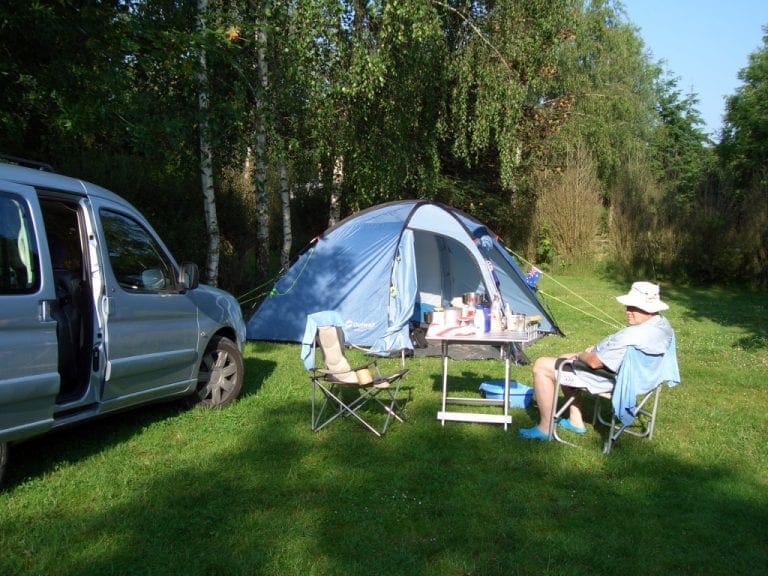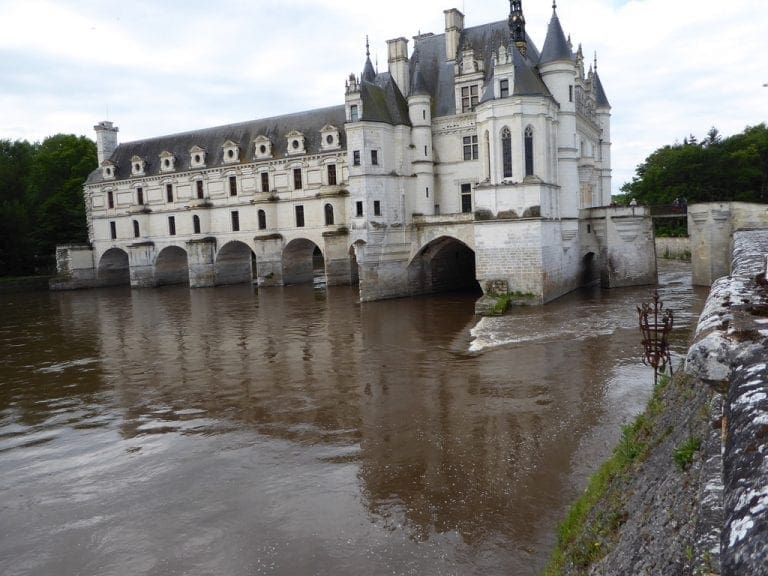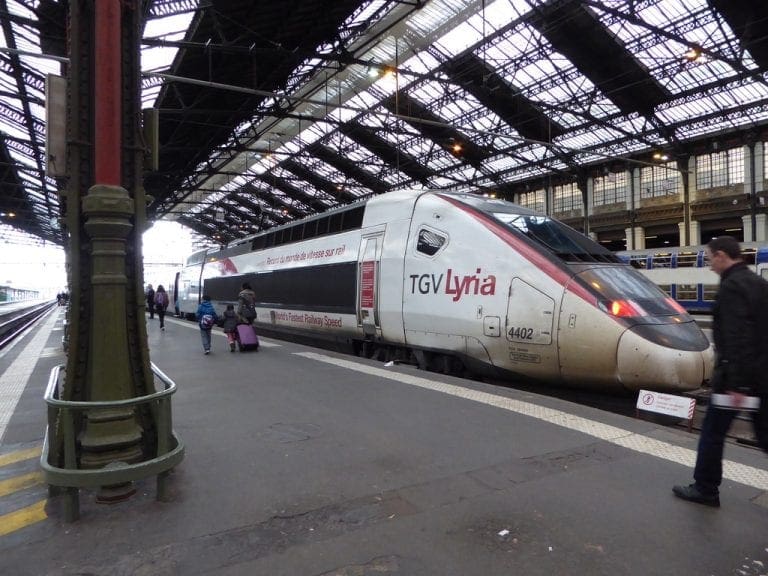Europe Trip 2018 – week 3 Banbury Ironbridge
Thursday 17 May 2018. Day 17. Today begins the real road trip. We have begun with the car. We took a 360 bus to Vauxhall and then a South West Train to Virginia Water (that bit took 2 hours) to pick up our car from Penny Car Hire which I had found after considerable research on Mr Google. We wanted a car with SatNav – usually not available on a Rental in England. Huh? We have a Kia Niro hybrid. Very friendly and everything as promised online.
All has gone well so far driving along small roads and motorways through Oxford and up to North Newington near Banbury where we are in our third HomeAway accommodation. This is in a lovely old stone cottage where we have lots of space with three good sized rooms. Across the street (which looked much bigger on Google Maps) is the Blinking Owl Pub and next to it a cottage built in 1673. A short walk in the afternoon to look over fields. Very beautiful and clearly very English.
The cottage where we are staying is one of a group which make up a mediaeval ‘servo’. We are a day’s walk along the ‘salt trail’ from Stratford to London. Within the cluster of buildings are several forges, wheelwright, accommodation for people and horses, food for people and horses. On the floor of one farm building, over time, big horses wore down the cobbled floor on which they stood.
 |
| 1st Duke of Marlborough with Sarah and kids |
Friday 18 May 2018. Day 18. Blenheim Palace – home of the Dukes of Marlborough. John Churchill, the First Duke of Marlborough won a significant battle in 1704 against Louis XIV of France at Blenheim (in Germany), a battle that significantly changed 1) the power structure in Europe (France did not become a significant power again after this); 2) the way battles were fought (previously sieges were normal, after this, battles involved movement of infantry and cavalry as chess pieces); 3) the structure of the battle between Britain and Germany in WWII (Winston Churchill, descendant and fan of John Churchill had seriously studied John Churchill’s strategy and early recognised that Hitler was following a similar path as the French had).
 |
| Hastily written dispatch “I won. More news later” |
Winning this battle was a big deal. Land for Blenheim Palace was gifted to the Duke of Marlborough by a grateful monarch, Queen Anne. It is worth noting that Winston was not a Duke of Marlborough (though he did sometimes live at Blenheim) and the following Dukes of Marlborough (now up to 12) have done little to distinguish themselves. The family still lives at Blenheim Palace. It is also worth noting that without an injection from the Vanderbilt family (through the unwilling marriage of Consuelo Vanderbilt to 10th Duke) Blenheim Palace would probably not now exist. David Starkey made a recommended TV Series ‘The Churchills‘ on 1st Duke and Winston.
 |
| Largest private organ Good for parties |
Another interesting story is the relationship between Queen Anne and 1st Duke’s wife Sarah Jennings. Sarah oversaw building of Blenheim Palace. Sarah and Anne were childhood friends. Sarah was dominant. When Anne became Queen, Sarah tried to dominate the new Queen Anne and they fell out. Sarah was expelled from court. When John Churchill returned from winning all his wars, he found himself in exile. Bugger. He and Sarah went to France to suck up to the yet to be King of England, George I. Cunning pair.
Banbury has become a growth centre. It is just 1 hour by train from London and so has become commuter centre. Artificial intelligence and robotics are growing here.
 |
| Young falcon being trained on very short flights – 1 to 2m |
Saturday 19 May 2018. Day 19. A drive around the northern part of ‘The Cotswolds’ – pretty but it does not measure up to its hype. First to a bird flying exhibition at the Cotswold Falconry Centre where for the 10:30 exhibition they flew four birds. (Loved the vulture that glided a couple of metres above the ground – sniffing for dead things.) Most birds get a ‘fly’ each day depending on the weather (too windy and cold and the bird might not want to fly) and how recently fed (too ‘fed-up’ and the won’t want to fly). Quite a good educational display and brochure. Quite a few ‘rescue’ birds. The Falconry’s aims are education and conservation. Before the invention of shotguns anyone who could afford a bird of prey had one or many. Birds were kept in ‘Mews’ (named for the sound) which often later became stables – hence ‘Buckingham Palace Mews’ where the coaches and horses are kept were once houses for falcons and hawks.
 |
| Chipping Campden Market Hall |
From there, we drove in a loop to Stanton, to Chipping Camden and back to North Newington. Stanton is a pretty, very old village – though it looks as though every building is classified and any maintenance, repairs would require a royal warrant and be very expensive. Chipping Camden was a very important town. It was the centre of the English wool industry when English wool was the best in the world. A King’s ransom was once paid in English wool. The old (restored) Market Hall (built 1627) is in town centre just north of Sheep Street. There used to be very narrow lanes where sheep passed one at a time – for counting. Those lanes have now been converted to shops.
 |
| Buttercups |
Sunday 20 May 2018. Day 20. A local day. We are already touristed out and sick of the Cotswolds. I know that we have missed the ‘best bits’ but we decided to stick with our local village of North Newington and the nearby village of Shutford. We headed off to Shutford which had a major ‘plush’ industry weaving a high cut nap (a double warp weave similar to velvet) livery for coaches. The factory kept operating until about 1948. Nothing now remains. The village is a delight. We first walked through fields with black headed sheep then wheat, before returning and walking around the three side of the triangle that makes the village before a few drinks and very good chat at the George and Dragon.
We have enjoyed our stay at North Newington – a delightful village.
 |
| 50 of these were made for Queen Victoria’s jubilee. |
Monday 21 May 2018. Day 21. Drive to Ironbridge along motorways and visit to Coalport China. The Coalport China Museum and display was great. We had an excellent guide who explained things for us. This was a large high-end commercial china maker for about 130 years. Begun in 1795 by John Rose to take advantage of the local coal for the kilns. Highly sought after beautifully painted china. Employed many in fairly horrendous and unhealthy conditions (dust and lead). Closed in 1926 – depression – no market for the high-priced china. Very early adoption of industrial methods – each person doing a single task and passing the piece along to the next process. Quality control was high – if not 100%, the piece was smashed and those making it did not get paid.
Production was rapid – a man making plates was expected to make 1,000 plates a day. Some of those plates would be painted by a team of women each adding a single colour between firings at decreasing temperatures. Two types of moulds were used: an open mould used to form plates and cups which sat on a ‘potters wheel’ and used a clay made up of 50% bone ash, hence ‘bone china’; a closed mould for handles and vases into which a watery paste of the above clay (called ‘slip’) was ‘injected’. A very interesting place – well worth a visit.
 |
 |
 |
| Inclined Plane – brought coal downhill avoiding 24 lochs & 5 hours |
Loading a kiln with ‘Saggars’ each holding up to 56lb of china |
Kiln partly loaded with ‘Saggars’ |
Our flat at Ironbridge is smack bang in the middle of the little (tourist infested) village. We are in the town square and overlook the famous Ironbridge itself. (Built in 1779 by ironmaster Abraham Darby III it was the first in the world to use cast-iron structurally, and artists and writers, spies and engineers came from all over the world to marvel. ‘A wonder of the industrial world.’ Said to herald the Industrial Revolution – certainly the iron part of it.) Unfortunately the bridge is covered in tarps for restoration. This is the first of our Booking.com apartments for this trip. (Apartment 4 of 22 for the trip)
 |
| Coalbrookdale by night Bedlam Furnace Painting from 1801 |
Tuesday 22 May 2018. Day 22. Blists Hill Victorian Town Open Museum. This is a collection of buildings from about 1900 that have been brought together on this site in an effort to represent that time. Few of these building were then on this site. At that time it was a collection of blast furnaces, foundries, mines and factories. It would have been extremely noisy, filthy, busy and dangerous. Huge furnaces with their enormous steam operated bellows. Huge hammers weighting tens of tons smashing down on pieces of molten iron to ‘wrought’ it – a constant ground-thundering ‘thump. Molten iron being run over and over through rollers. Brick factories stamping out bricks. The noise would have been incredible. Mines to 609 feet also on site bringing up coal, limestone and clay (for those bricks).
 |
| Making tallow candles one dip at a time |
By 1900, the site no longer dominated the ‘industrial world’ as it once had. One story is that the industrial revolution began here (at Coalbrookdale with almost the first coke-fired blast furnace in 1709) in the Severn River valley. Begun by men such as Thomas Telford, Abraham Darby and Richard Trevithick (for whom in 1802 the Coalbrookdale Company built a steam engine, the first railway locomotive in the world – 27 years before Stephensons ‘Rocket’). It was certainly a major site for industrialisation of iron.
Wednesday 23 May 2018. Day 23. That is enough of industrials and museums. We went to Bewdley a small nearby village that was recommended to Helen. Disappointing. Full of locals being tourists. Quite a nice village on the Severn with a flock of poms attached to the eating houses near the picturesque bridge. A few notes on roads and driving so far. Windy roads with people going too fast for the roads – often on the wrong side of the road because they are going too fast. Badges of honour are given for: not using indicators in any circumstances; failing to stop at ‘Give Way’ signs; driving at twice the posted speed limit. The highlight today was an old fellow on a mobility scooter who was negotiating a speed bump on a very narrow road to a car park. A car arrived behind him and sounded his horn in a series of long blasts.
Onwards tomorrow. The adventure continues.

















